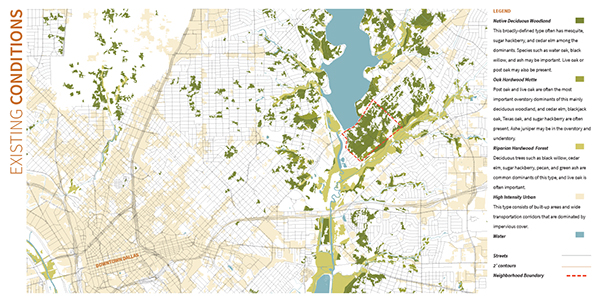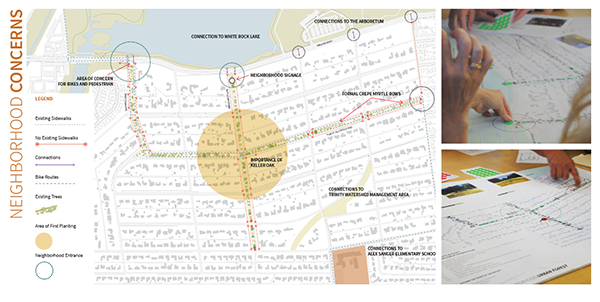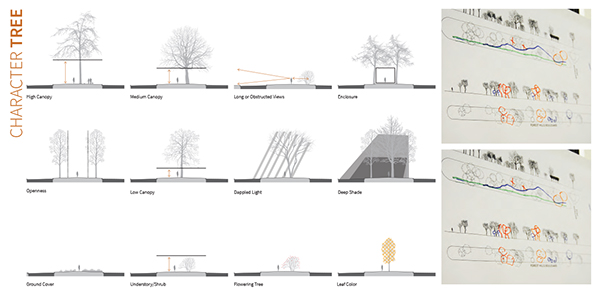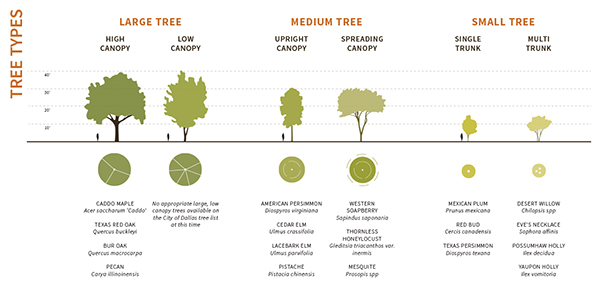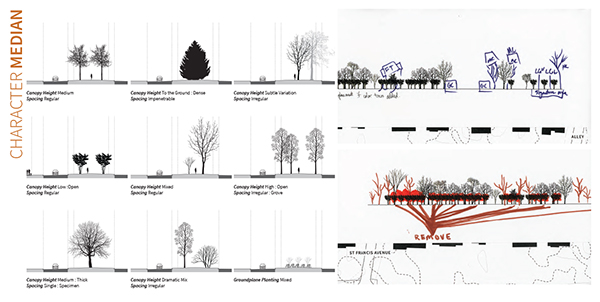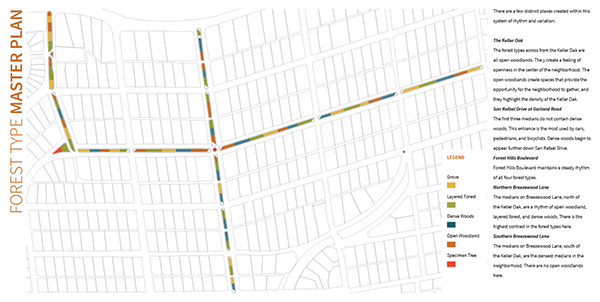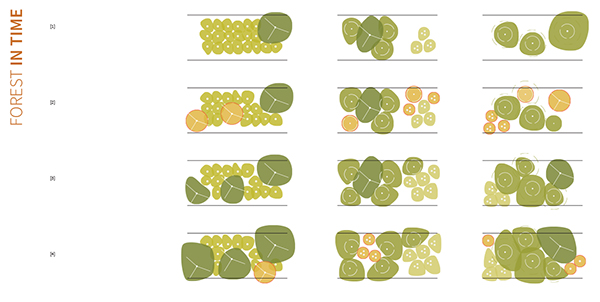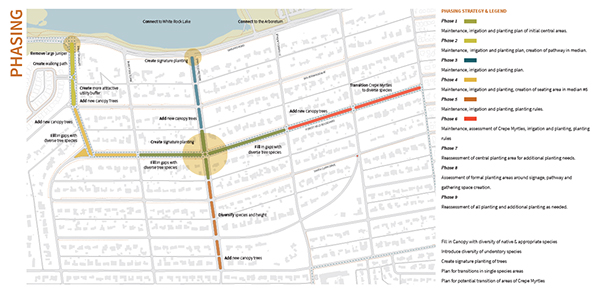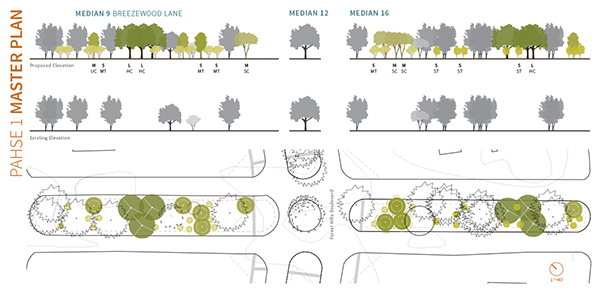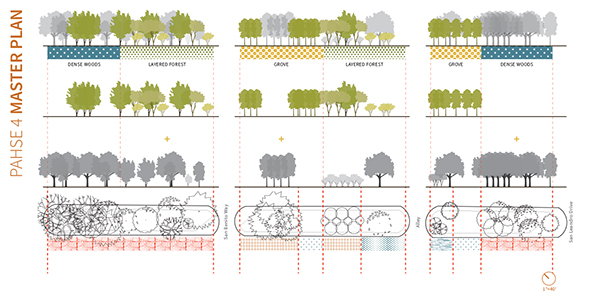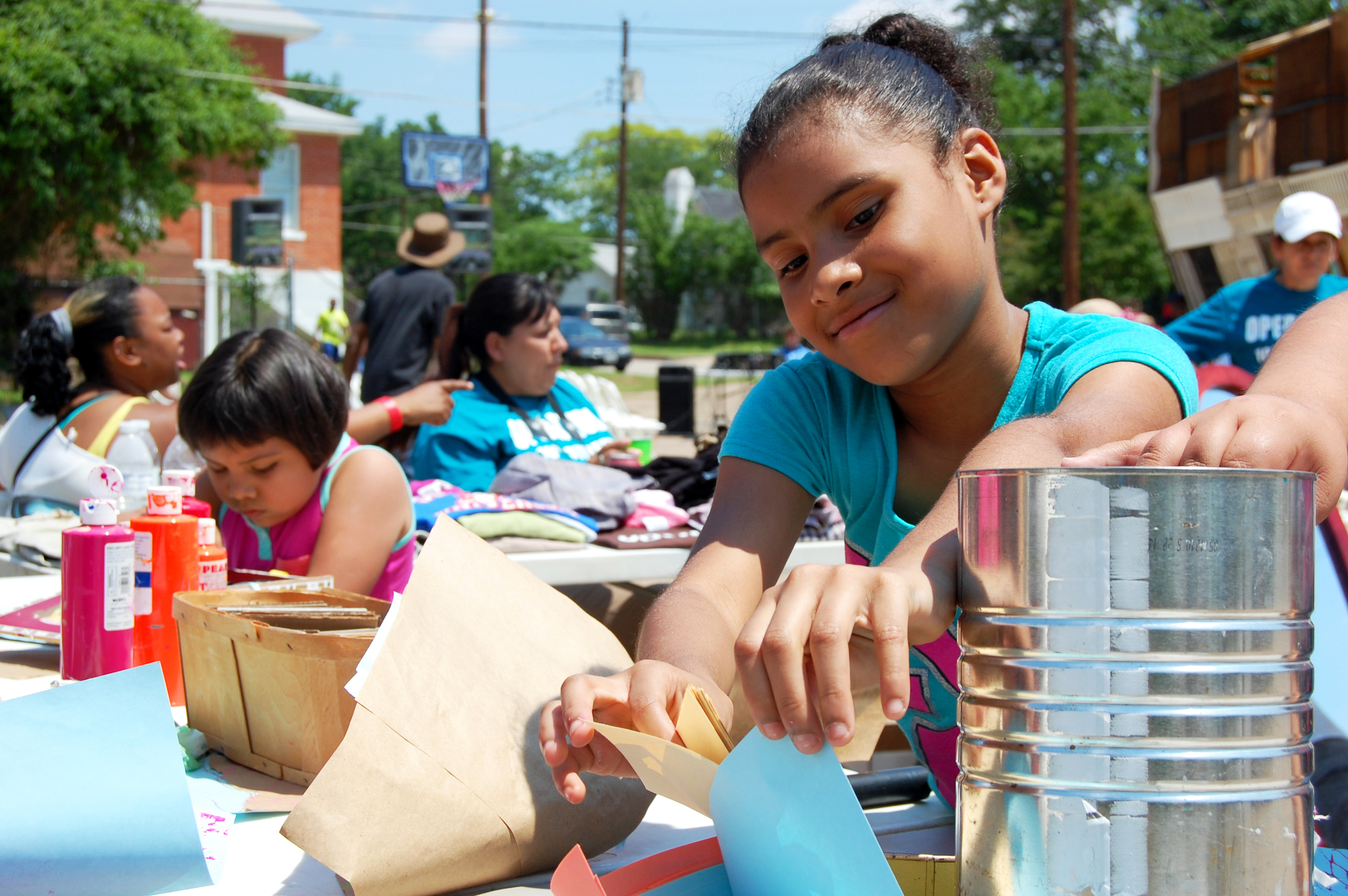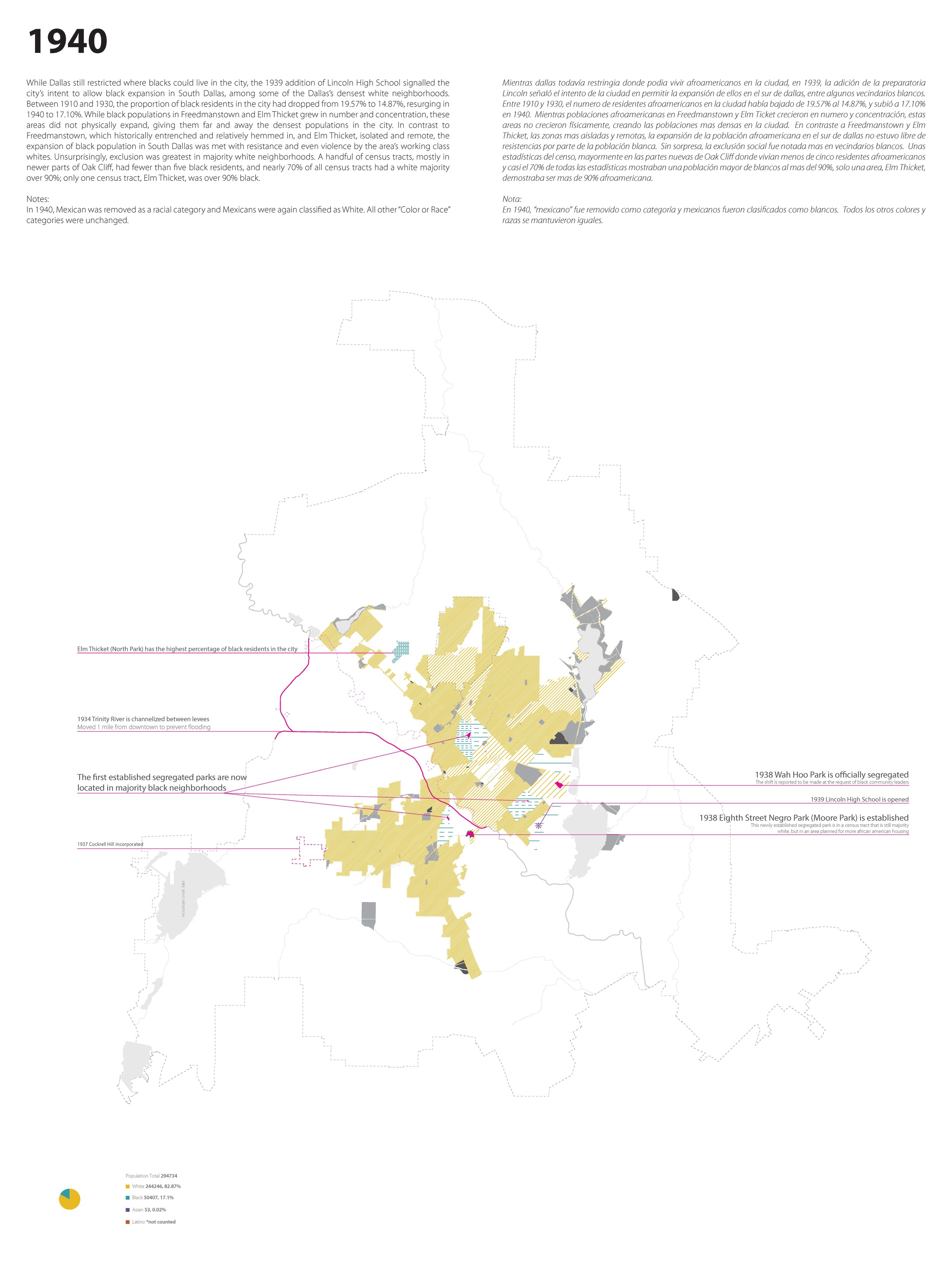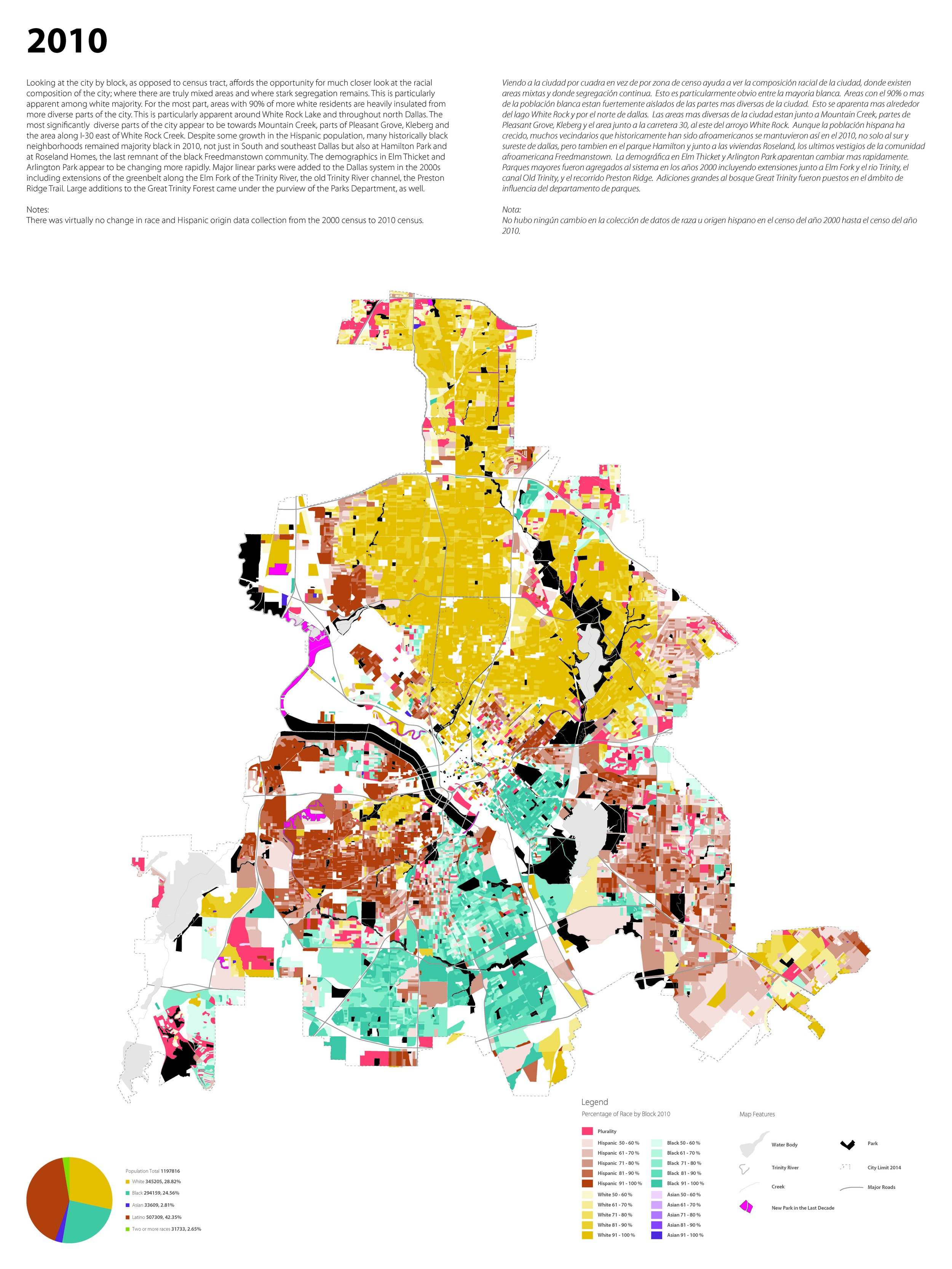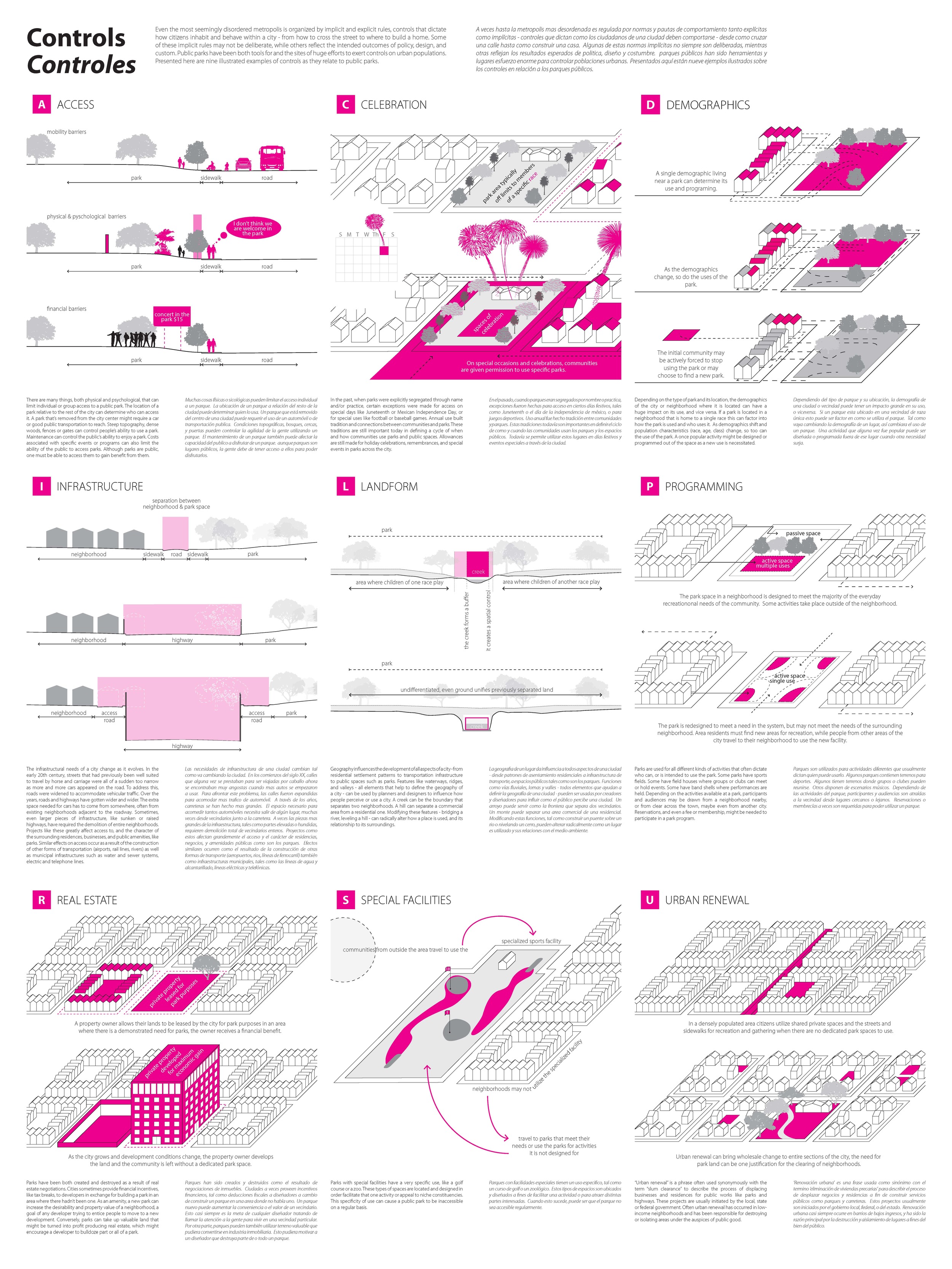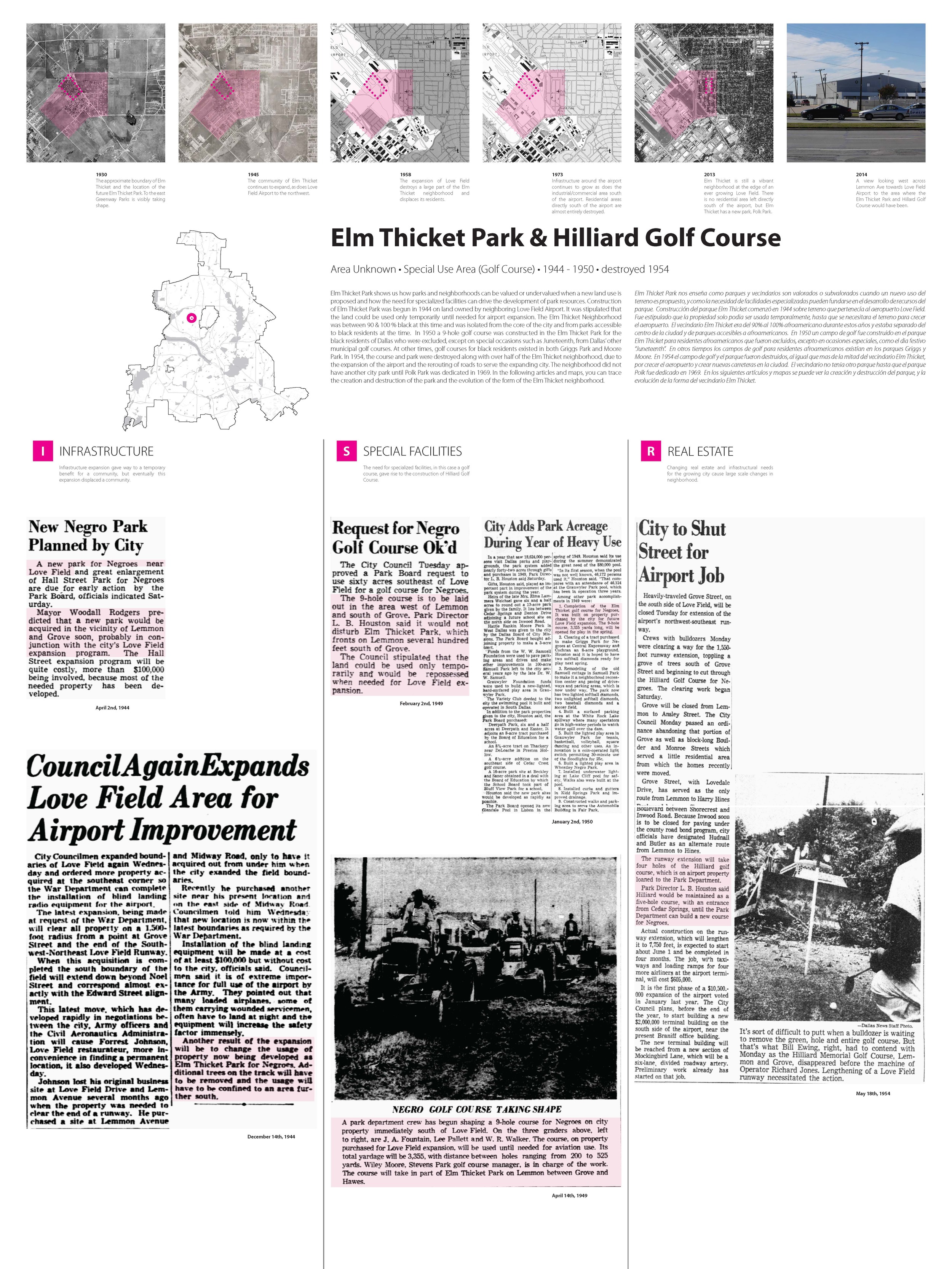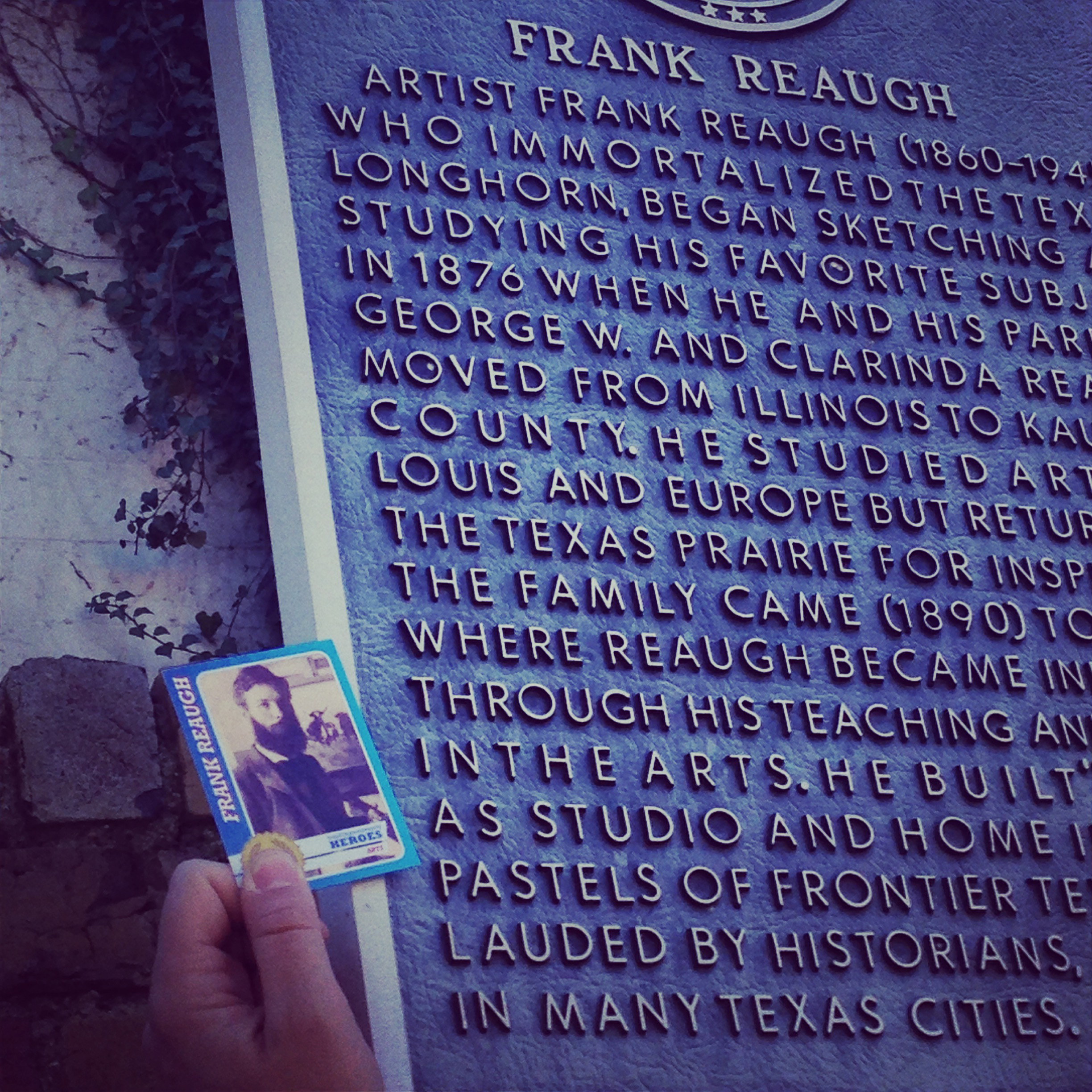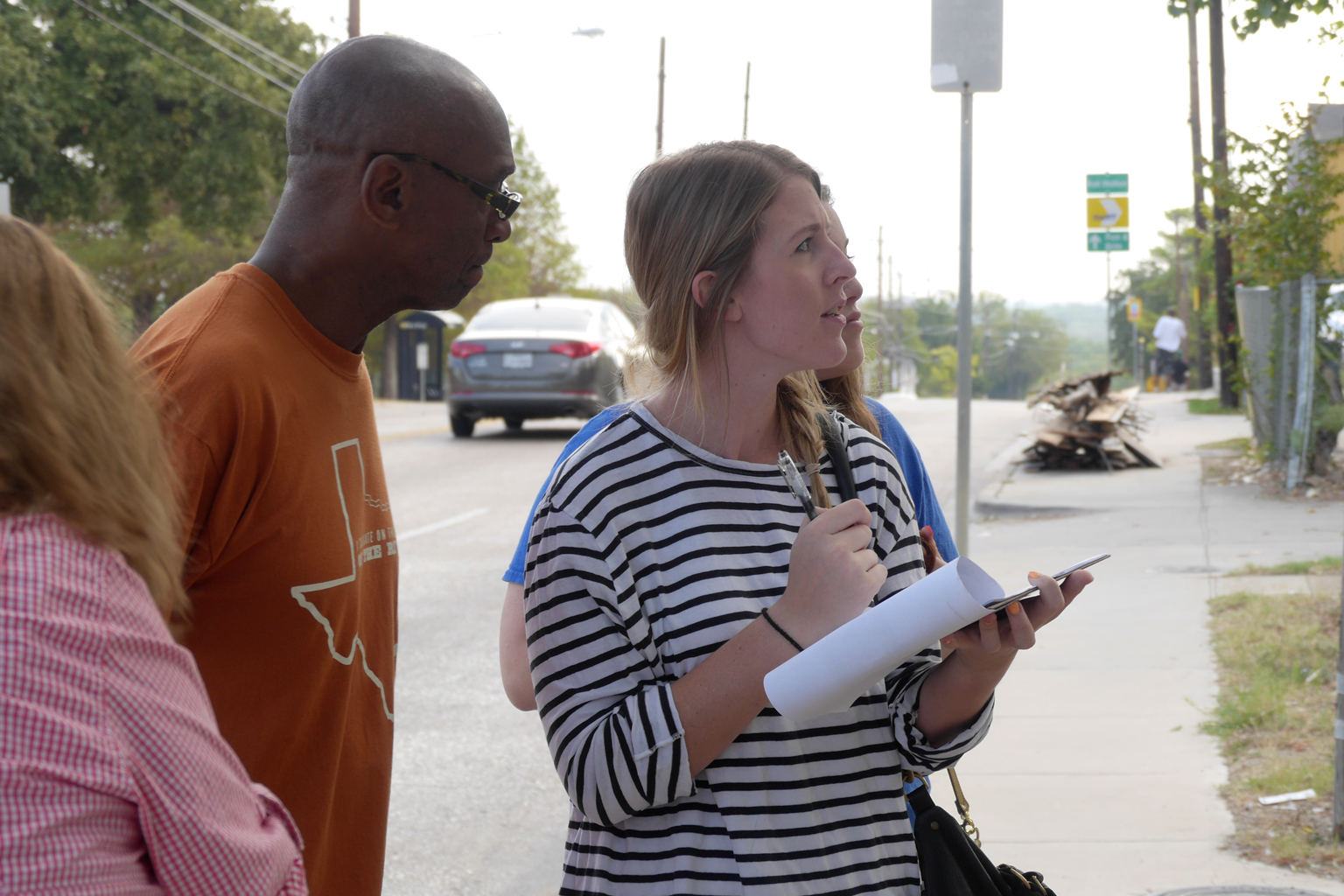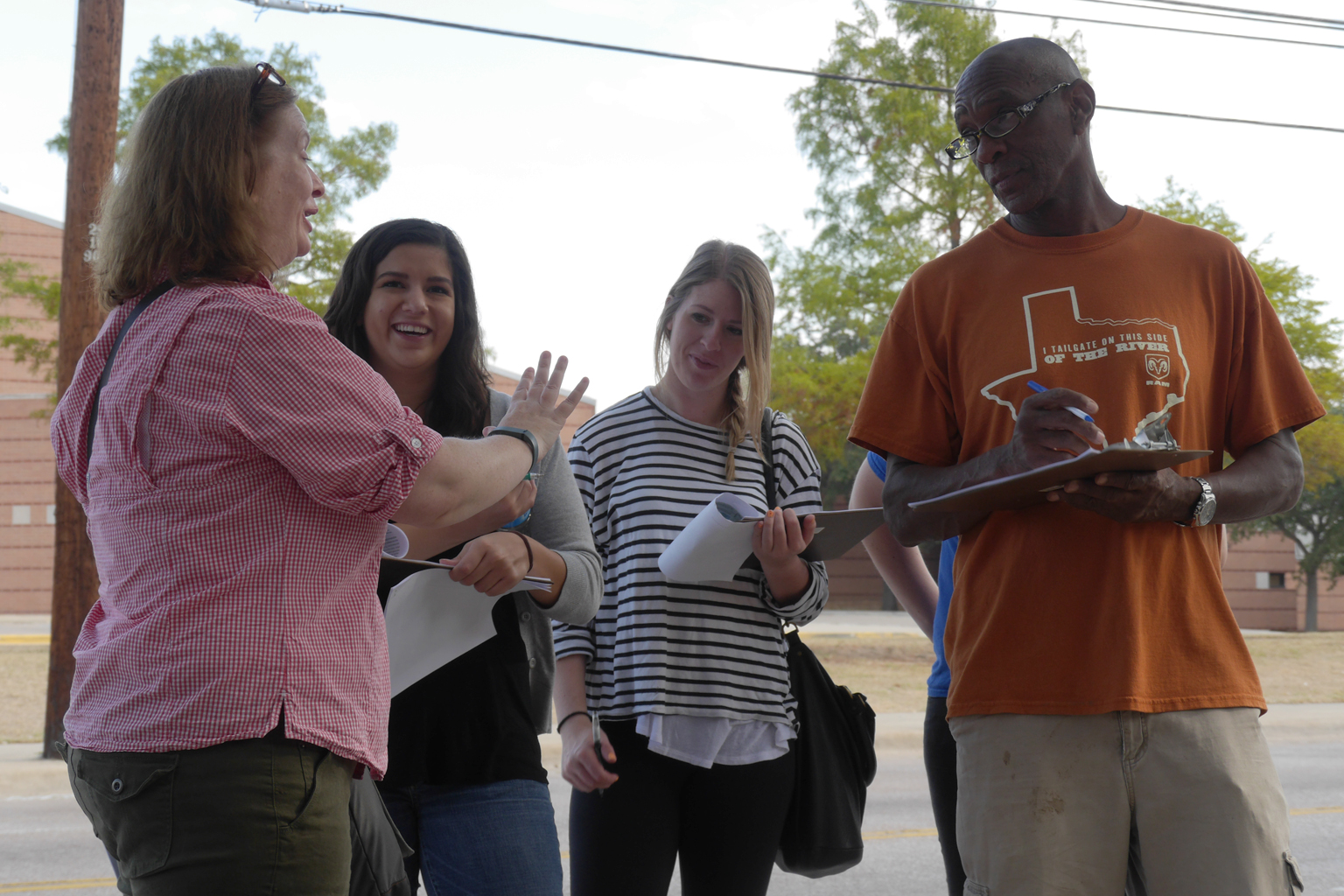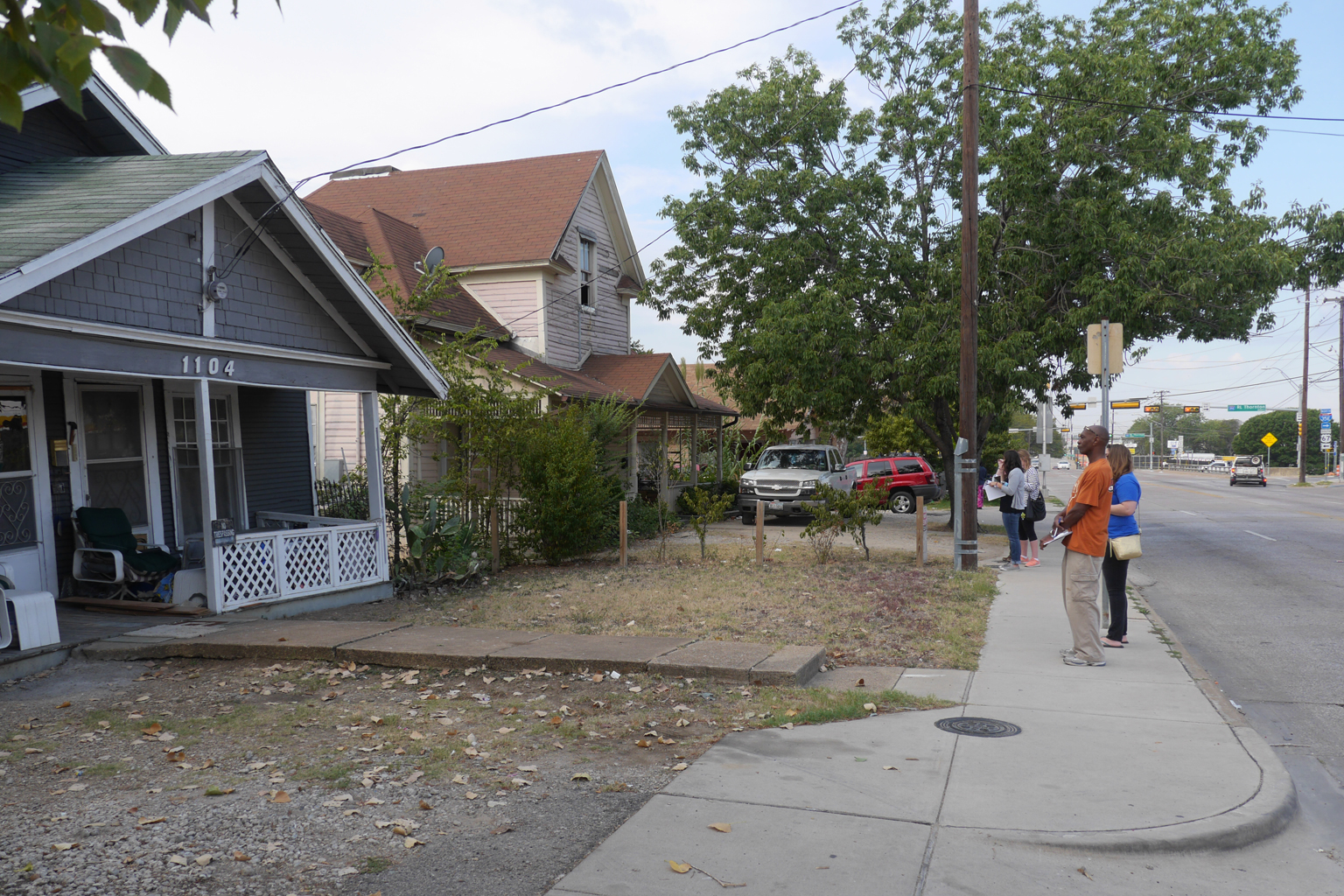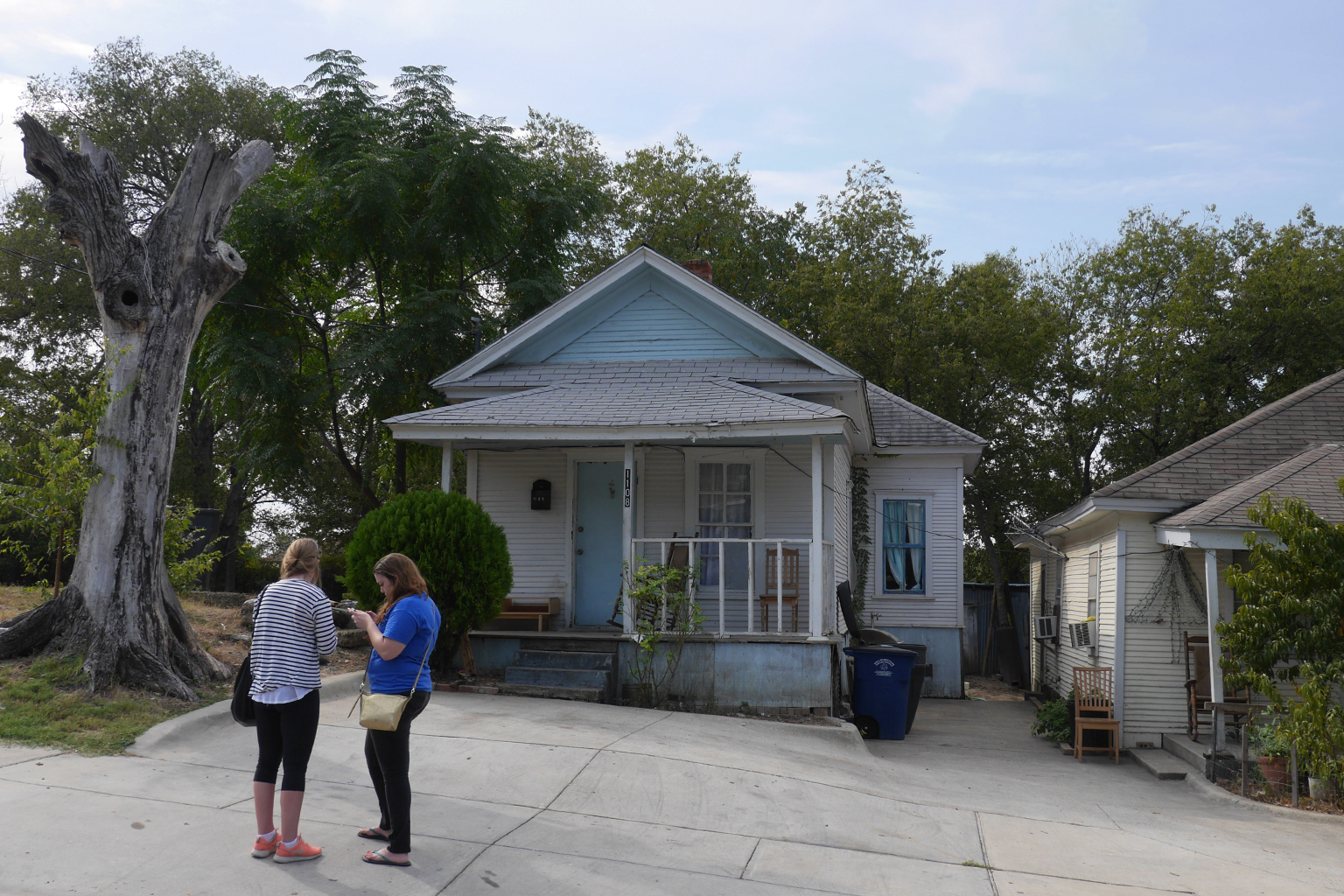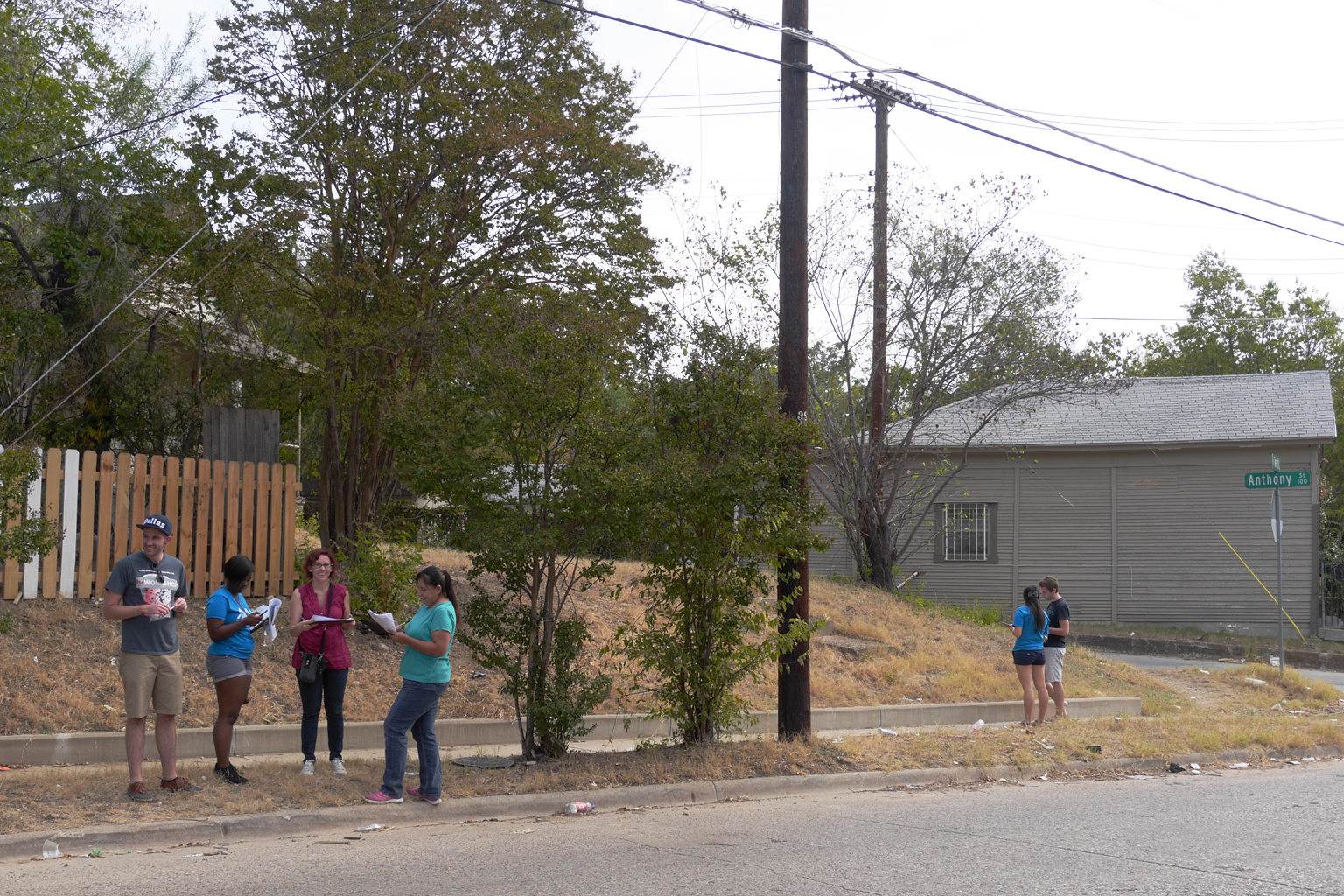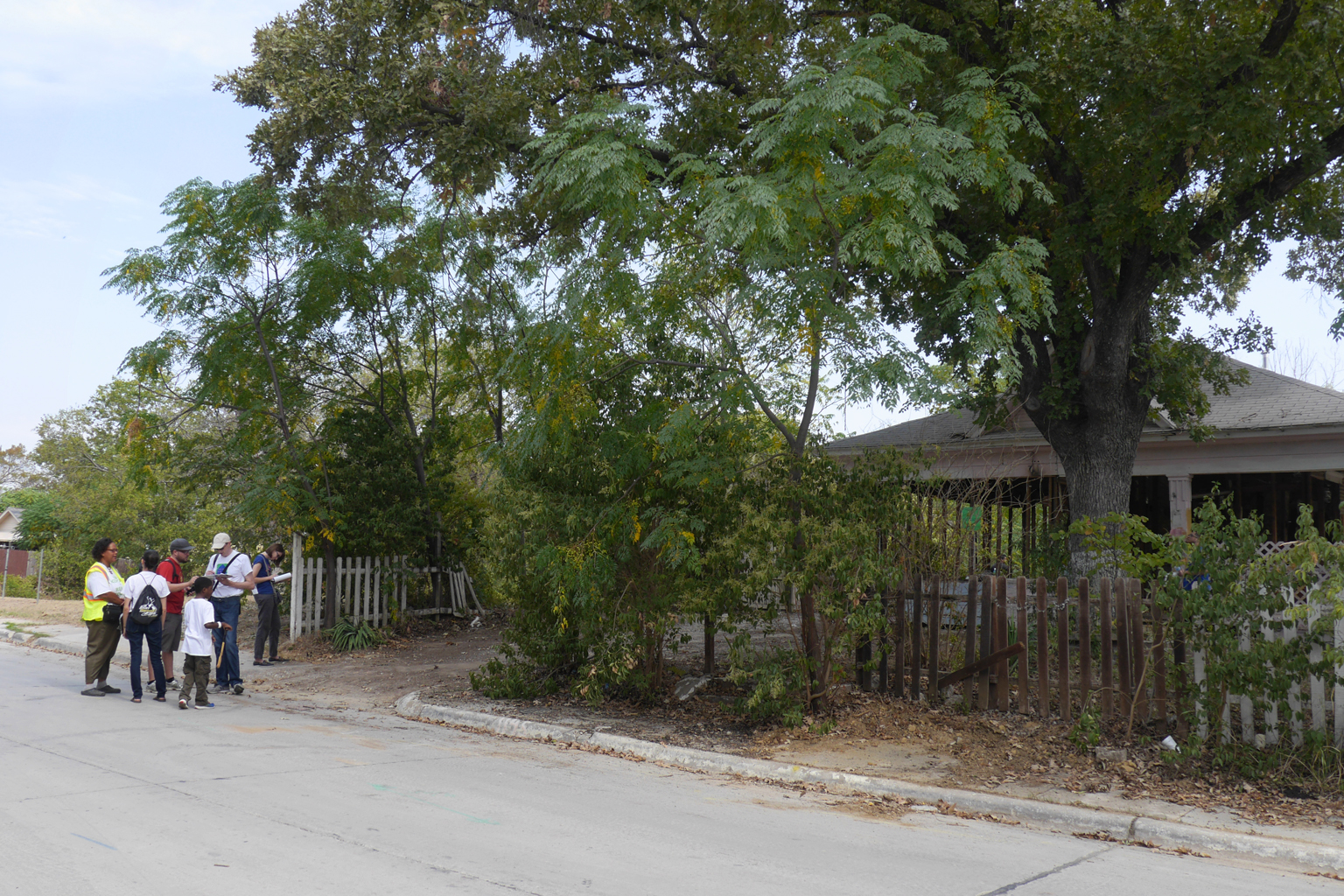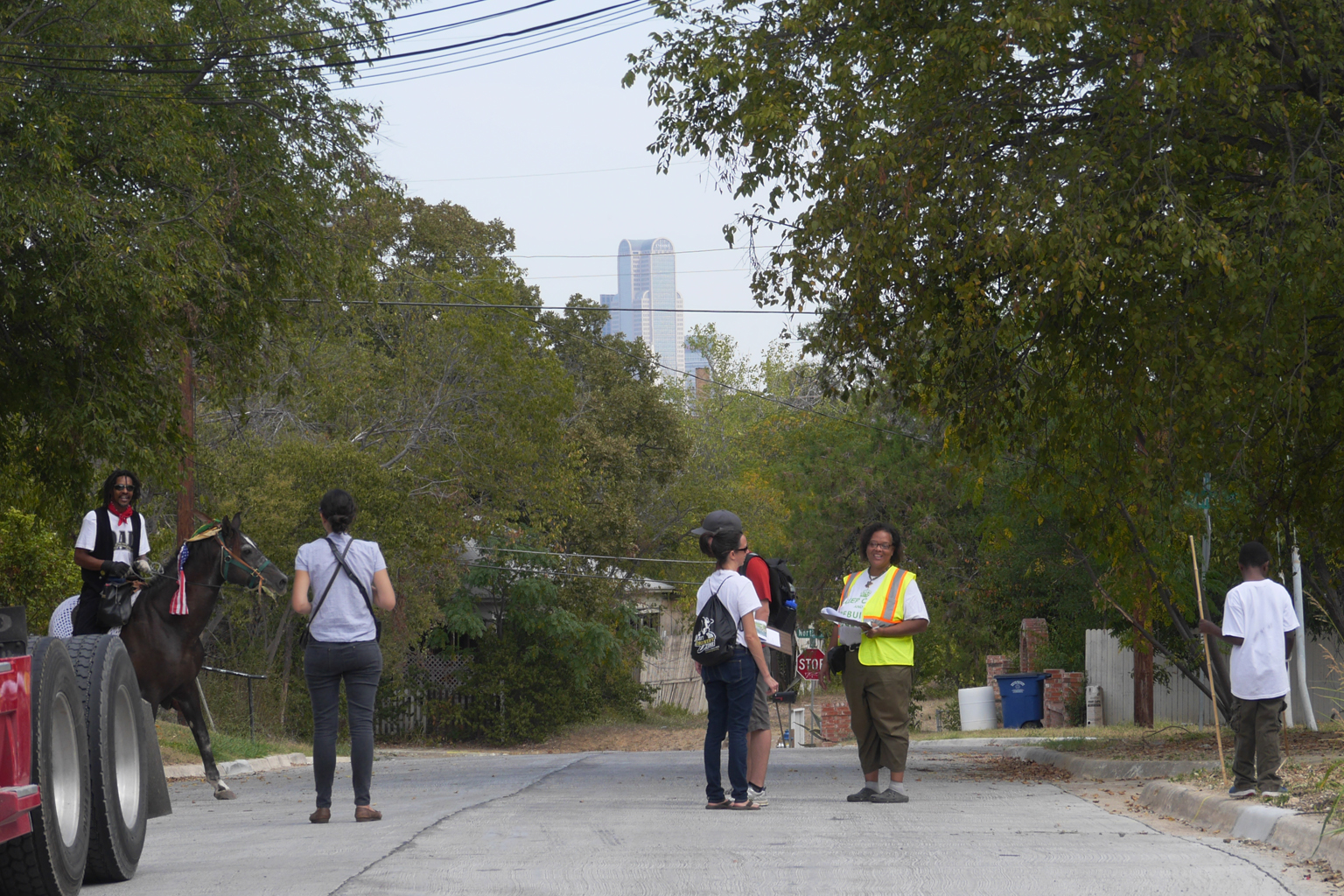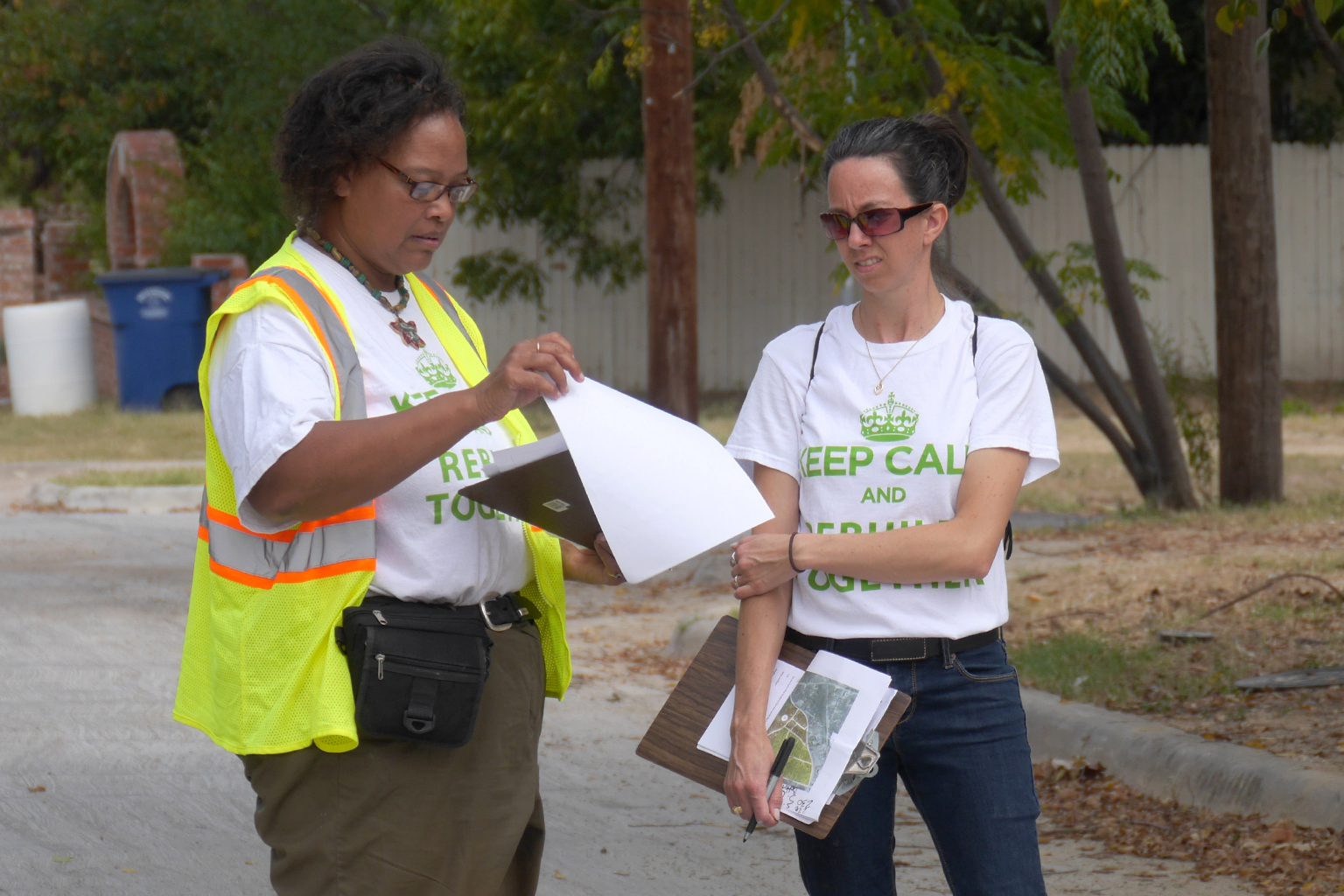Are you curious about the methods we use to design and implement our projects? Check out the new [bc] Method Guides! Individually, they detail the six methods- activating, analyzing, informing, making, mapping, & storytelling- that [bc] uses across scales and geographies.
Read MoreKnow Your Neighborhood Film
At bcWORKSHOP, we believe neighborhoods are the fundamental building block of our cities. Our newest short film, Know Your Neighborhood, explores how neighborhoods are defined, how we value them in Dallas, and methods we can use to better know our neighborhoods.
PDII Project Wins Texas ASLA Award
Learn more about the Public Design Impact Initiative!
The Forest Hills Neighborhood Association Urban Forest Plan was awarded a 2016 Merit Award for Communications by the American Society of Landscape Architects Texas Chapter! The Merit Award for Communications "recognizes achievements in communicating landscape architecture information, technology, theory, or practice to those within or outside the profession."
Design partners for this project were Gwendolyn McGinn & Isaac Cohen.
Nonprofit partners for this project were the Forest Hills Neighborhood Association.
The following project description was written by the Design Partners for this project - Gwendolyn McGinn & Isaac Cohen:
"The Forest Hills neighborhood is distinct from others in Dallas because of it’s dense tree canopy. But the urban forest is in decline as the trees that form it’s canopy are nearing the end of their lives; many of the oaks, cedar elms, and pecans that form the canopy were established even before the neighborhood was platted. In 2015 as a part of a Public Design Impact Initiative, the Forest Hills Neighborhood Association (FHNA) collaborated with [bc] to create a plan for their urban forest.
The medians in the central boulevards of the neighborhood total almost 7 acres, and were selected as a discrete project to begin the process. The FHNA anticipates that the reforestation of the medians and the active involvement of the community in the design process will create a sense of shared responsibility towards the neighborhood’s urban forest and will encourage further planting of trees on private properties, along parkways and in yards.
Through the Public Design Impact Initiative program, [bc] partnered FHNA with landscape designers to develop a language for the urban forest. A central element of this collaboration was creating the definition of what 'urban forest' meant to the neighborhood. By clearly defining spatial and functional characteristics of the forest, all design decisions would relate back to this statement. The process of defining the urban forest of Forest Hills consisted of collecting comments from residents on existing and desired conditions, site analysis by the landscape designers and residents, and the development of a system to express existing and proposed spatial qualities of the median forests.
The Forest Hills Neighborhood Urban Forest
Ecologically, functionally, and in character the Urban Forest will reinforce the identity of Forest Hills by creating a visually appealing and ecologically valuable public realm within the boulevard medians of the neighborhood. The process of creating the urban forest plan and implementing it will build community and strengthen connections to neighboring amenities including: White Rock Lake, White Rock Creek, and the Dallas Arboretum.
Instead of creating a traditional master plan, the Urban Forest Plan describes desired spatial qualities of the medians and provides a strategy that will assist in the implementation of the forest over time as conditions within the medians change. This focus on forest qualities was the result of a series of variables that had to be accommodated in the master plan. The FHNA had to be able to implement the plan over the course of three years, and since the City of Dallas provides trees for planting, the available and approved species at the time of planting can not be predicted. To adapt to these conditions, a new way of discussing and planning with trees had to be created. Formal and spatial characteristics of trees and forests were utilized to create a vocabulary that neighbors could use to make choices and create plans without an attachment to specific tree species. The communication of these characteristics and their use in the creation of the urban forest plan allows for a wide degree of variation in implementation to fit spatial, budgetary, and ecological needs.
A community-engaged process for the creation of an urban forest plan is foremost about communication between a design team and neighborhood residents. The main question, how in a community-engaged design approach, do you provide the tools and information needed for a neighborhood to plan their physical environment? The creation of these tools and the communication of their use has been a key reason for the success of this urban forest master planning process.
A process of core community team meetings and large neighborhood meetings allowed for a continual dialogue during the development of the urban forest definition and the Urban Forest Plan. These meeting enabled neighbors to learn about and apply complex spatial issues; tree form, forest types, spatial sequences, and rhythms. All project participants were encouraged to communicate their design intentions throughout the design process—one key example of this is that neighbors were able to complete notational sequences, diagramming their desired changes to the boulevard medians, through tree form and characters.
Additionally, this process allowed for consistent communication between the design team, core community team, neighborhood association, and the neighborhood to answer questions of the how, what, where, why, and when so that all could participate. Questions of maintenance, the timing of new work, cost, irrigation, ecological responsibility and species diversity were all considered, as well as the ability to guide questions outside the scope of the project in an appropriate manner.
The resulting document communicates a strategy that can be utilized by community members and expanded upon by design professionals as implementation occurs. It can be used to plant trees, create spin off projects, advocate for City work, and grow support for a variety of neighborhood projects. It communicates the value of landscape architecture and design through imparting valuable knowledge in a clear and concise manner, creating the ability for this knowledge and thought process to be expanded beyond this one project."
Smart Growth for Dallas
Smart Growth for Dallas is a partnership between The Trust for Public Land, [bc], and the Texas Trees Foundation to help the City of Dallas make data-driven and strategic decisions about its future investments in parks, open space, and green infrastructure. The program’s primary feature will be a decision support tool, built for the Dallas Parks and Recreation Department and available to all departments within the City of Dallas, to help grow the local economy, connect communities, improve public health, and protect Dallas’s most important natural places through investment in parks and green infrastructure.
[bc] will lead the programs community engagement and storytelling efforts providing opportunities for neighborhoods across Dallas to influence how the process develops. These two efforts are vital to the success of the project and will create the propelling voice and political will that can turn strategic decision into action. This work is a continuation of our 2014 Race and the Control of Public Parks (available on the People's Design Library website) that sought to understand the relationship between segregation and the public park system in Dallas.
To help us get started, please complete a brief survey to tell us what values and challenges parks bring to your neighborhood and to Dallas. This will help us better design our engagement activities across the city.
https://bcworkshop.typeform.com/to/ZWtoCV
Announcing The People's Design Library!
buildingcommunityWORKSHOP ([bc]) is pleased to announce the launch of the People’s Design Library (www.peoplesdesignlibrary.com), a digital library for anyone looking for help in improving their community. Three collections - guides, inspirations, and [bc] publications - provide practical advice and examples of the wide range of resources out there for citizens doing community work. [bc] believes that it is the right of the People to shape their city and wants to equip citizens with the tools to exercise that right and have some fun doing it!
“There are countless design, policy, and organizing guides created by different organizations to help citizens navigate how to make lasting change in their neighborhoods. We created The People’s Design Library to bring these resources together in one place, something that hasn’t been done before,” says Lizzie MacWillie, Senior Design Manager. “If you know of, or have created, a great guide, you can submit a resource to the library! The more people contribute to the library, the better it will be.” Topics covered by the guides posted so far include how to conduct effective community outreach, how to convert underused street parking spaces to a public amenity, and how to map existing neighborhood conditions using balloons and kites. New resources will be posted every two weeks.
The People’s Design Library is the latest project of People Organizing Place (POP), the participatory city shaping initiative of [bc]. POP puts local stakeholders in collaboration with outside expertise to proactively shape their neighborhood’s future. Through POP, [bc] provides accessible tools, expertise and resources like The People’s Design Library to citizens.
Bonton + Ideal Trailer
We're excited to share the trailer for our newest Neighborhood Stories film Bonton + Ideal! The film premiered on December 24th, 2015 on KERA's Frame of Mind program. Since the premiere, the film has been accepted to the Big Muddy Film Festival in Carbondale, Illinois, and the Interurban Film Festival in Denison, Texas. Watch the film's official website for more details about local screenings as they become available. Later this spring, the film will be published online for free - be sure to keep your eyes open!
What people are saying:
- The Dallas Morning News calls Bonton + Ideal, "a must-watch for anyone who cares about the history of Dallas and how it developed as two cities: one for whites, another for blacks."
- Check out Art & Seek's Q&A with director Craig Weflen on Bonton + Ideal, Neighborhood Stories, and storytelling.
POP Project Guides
Ever thought about doing an oral history project in your neighborhood? Want to learn more about why we think Little Free Libraries / Libros Libres is one of [bc]’s most important neighborhood planning tools? Check out the first two buildingcommunityWORKSHOP Project Guides, a series of short publications that describe the what, how, and why of our People Organizing Place projects.
Read MorePOP at the DHL Boot Camp!
Two weeks ago, as part of our year long POP Neighborhood Map engagement process, [bc] participated in the annual Dallas Homeowners League (DHL) Boot Camp. This years DHL gathering, titled "Return of the City", brought together neighborhood leaders from across Dallas for a day of discussions and best practice-sharing.
Read MoreThe Second Annual Ark Festival: The History, Present & Future of Tenth Street
Learn more about Activating Vacancy.
Last year, as part of our Activating Vacancy initiative, artist Christopher Blay and [bc] collaborated with the Tenth Street Historic District community to produce the Ark on Noah Street. The Ark is a sculpture, a gallery, a museum and a symbol. When Christopher Blay created the concept of the Ark, a fundamental facet of the project was that it be reproduced yearly to keep art and culture active in the Tenth Street Historic District and to create an opportunity to celebrate, share and reflect on the neighborhood's history and the changes of the year.
On May 2, 2015, the Ark was again commemorated during the Second Annual Ark Festival, a gathering of the Dallas arts community and the Tenth Street Historic District that was even bigger and better than before! The festival featured a processional of residents with original artwork depicting the neighborhood's history and its growth since the Ark was last seen, a performance of the original Story Corners play "A Freeman Cries for the Future," a visit from the Dallas Zoo, and the return of the Neighborhood Stories: Tenth Street exhibit. There was also a small marketplace for neighbors and arts activities led by Oil and Cotton.
The Tenth Street Historic District is one of Dallas’ oldest neighborhoods and one of its few remaining freedmen’s towns, communities built by freed slaves following the Civil War. Despite being designated a landmark district by the City of Dallas in 1993 and being listed on the National Register of Historic Places in 1994, the neighborhood has lost population and housing stock at a rapid pace. It has also experienced a growth in crime and a deteriorating public image. In response to these challenges, [bc] initiated Activating Vacancy to encourage residents to reshape the vacancy in their neighborhood from blight to opportunity through a series of public art activities, beginning with the Ark on Noah Street.
Activating Vacancy existed at a nexus of creative placemaking, public art and community organizing. Inspired by similar initiatives such as the Heidelberg Project in Detroit and Project Row Houses in Houston, Activating Vacancy sought to set in motion the revitalization of an important historic community, provide commentary regarding an array of urban issues such as vacancy and historic preservation and encourage a democratization of exceptional art in Dallas in terms of audiences, geographies and producers. The Ark on Noah Street was an excellent first step towards achieving these goals. The Ark as a gallery featured artwork produced by neighborhood residents. The Ark as a sculpture artfully repurposed discarded materials from Tenth Street's historic homes into a monument and testament to its history. The Ark as a festival brought neighbors, artists, critics and art consumers together to meet each other, rediscover an often forgotten part of Dallas and imagine a city where any neighborhood can be recognized as a source of valuable cultural producers.
At the Second Annual Ark Festival, it was made clear that the Tenth Street Historic District still faces tremendous challenges. Homes have been repaired, while others have been demolished. Crime is tempered, but it persists. There is also evidence of renewed action in the neighborhood: dozens of attendees wore Operation Tenth Street t-shirts, representing a new, forward-thinking neighborhood organization that has secured grant funding for neighborhood improvement projects. The Greater El Bethel Missionary Baptist Church has been repaired and again opens its doors to song and prayer on Sunday morning. And, the Ark has been rebuilt, fuller and more refined than its previous iteration.
In addition to the above challenges, there are a bevy of questions that have yet to be answered about the neighborhood that will help illuminate how sustainable its recent burst of energy is. Will Tenth Street be able to continue its revitalization with reduced non-profit activity? What will it take for Tenth Street to develop market interest in rebuilding its historic ground? Have recent efforts sufficiently demonstrated the neighborhood's value to the city at large to insist on its survival, whether through ongoing preservation efforts or through continued nurturing of its unique identity and role as cultural producer? Perhaps some of these questions will be answered and shared at the Third Ark Festival.
Texas ASLA Honor Award 2015: Race and the Control of Public Parks
Learn more about Race and the Control of Public Parks.
We're excited to announce our project on Race and the Control of Public Parks has received an Honor Award from the Texas chapter of the American Society of Landscape Architects!
According to the Texas ASLA, Professional Honor Awards are given to projects that highlight the diversity, distinction and ingenuity of landscape architecture. Race and the Control of Public Parks won in the research category, and the exhibit recognizes the ways in which the design, construction, programming, use, and alteration/renovation of public parks can reinforce divisions, both physical and perceived, between populations.
Recruiting Dallas Designers
On March 13, a group of DFW-area designers, urban planners & architects gathered at our office to learn about [bc]'s various designer partnership opportunities. At the social, [bc] shared with attendees the upcoming projects that need design partners to get involved. Below is an overview of the short presentation given during the social as well as the accompanying slides.
Read MoreCall for Design Partners
[bc] has found that the partnerships between designers/architects and community-based organizations are mutually beneficial, building the knowledge and experience of both to better serve others. With that in mind, [bc] is inviting local design professionals to become Design Partners to provide their services to meet the needs of local nonprofit and community organizations. There are a variety of roles for designers, architects, landscape architects, engineers, graphic designers, and planners of all levels of experience.
Read MoreCelebrating Local Heroes
Learn more about our MLK Day of Service projects here.
Dr. Martin Luther King Jr. challenged us to build a more perfect union and taught us that everyone has a role to play in that effort. For our 2015 service project in his honor, [bc] set out to recognize some of those who serve their communities by releasing the Second Edition of buildingcommunityHEROES trading cards. By creating a fun, tactile, and pocketable way to learn about those working to improve our communities, we hope to encourage those of all ages to honor their heroes and engage in the causes that speak to them.
We put out the call for local hero nominations at the beginning of January and received just over 100 nominations for those working tirelessly in Dallas, Houston and the Rio Grande Valley. Nominations included selfless family members, state senators, founders of schools, advocacy group members and fearless neighborhood leaders. It was not easy, but from here we researched and curated the nominations to get a final group of heroes with a diverse range of causes, ages, backgrounds and levels of impact. After the final selections were made, the cards were printed, sorted, packaged and ready for a January 19 distribution.
We distributed the cards on Martin Luther King, Jr. Day and throughout the week in Dallas, Houston and the Rio Grande Valley. We hope that the stories of these 24 heroes will inspire people to be more active in their communities. We also hope that the cards will encourage people to think about and honor their local heroes. If you were not able to pick up a pack, check out all 24 heroes plus 2014's at www.buildingcommunityheroes.org.
Who is your hero? Share them on social media at #bcHEROES2015 and nominate them for the third edition of trading cards!
Race and the Control of Public Parks
Learn more about POP Dallas.
Race and the Control of Public Parks is a 100 year history of the relationship between racial migrations in Dallas and the development of the city’s park system. An exhibit of graphical and historical research, Race and the Control of Public Parks makes evident that while parks are technically public and that all citizens are, in theory, automatically welcome, we must recognize the ways in which the design, construction, programming, use, and alteration/renovation of public parks can reinforce divisions, both physical and perceived, between populations. Launched on November 14 to coincide with the Facing Race Conference, a national assembly tackling racial justice, this project is just one component of an important critical conversation about racial inequity in cities.
To provide a comprehensive understanding of how the racial makeup of the city has shaped the design and use of public space, the exhibition was composed of four parts: a series of ten historic maps and one contemporary map that trace residential patterns by race and the parks system; an annotated timeline of the evolution of Dallas parks and park typologies over the last 100 years; a series of diagrams that illustrate parks as tools for or sites of nine types of social, economic, infrastructural, and civic controls; and a series of snapshots that illustrate the impact of these controls as they relate specifically to parks and race in the city of Dallas.
This exhibit provides the tools to interrogate the physical city and reveal the multiple ways in which we plan, build, and interact with it, exercising these tools through the lens of public parks and race. As a result of this work, parks will no longer be viewed simply as the green spaces on the map but will be recognized as places of recreation, conflict, celebration, engagement, protest, and daily life. Public parks will be seen as tools used to control social, cultural, economic, infrastructural, and civic activities.
Research and work produced for this exhibit lay the groundwork for extended work around the Control of Public Space, which will move beyond parks and look at sidewalks, streets, easements, and other forms of public space in the city. This work, like many People Organizing Place projects, gives citizens the ability to experience the city around them with new awareness, revealing hidden voices, histories, and controls that impact their lives on a daily basis. As citizens, we must work to understand our cities and to make them more livable and just for all, especially in our most public places, parks.
What others are saying:
Tenth Street Sweep Video
Learn more about Activating Vacancy and POP Dallas.
Libros Libres wins SXSW Eco Place by Design Community Impact Award!
Read the rest of our Little Free Libraries/Libres Libros posts.
On behalf of all of the project partners, library stewards, hosts, and designers, team members Isaac Cohen and Philomena Jones were on hand to accept the award. We were incredibly honored to be named one of 15 finalist for the award and excited that we had the opportunity to share the project with all of the attendees at the SXSW Eco Conference in Austin. You can see all of the award finalists here and learn about some great place making efforts from around the world: http://sxsweco.com/placebydesign
We look forward to capitalizing on this award and to building more Libros Libres in Dallas!
Tenth Street Sweep
Read all the Activating Vacancy posts, and learn more about POP Dallas.
The final event of the Activating Vacancy initiative was the Tenth Street Sweep, a physical audit of the neighborhood. Community members, volunteers, and artists collected data to establish a baseline for neighborhood health. They also recorded the conditions of streets, sidewalks, vacant lots, historic structures, street lighting, and several other aspects of the neighborhood identified by community members as potential sites for the audit. Information gathered will be used to propose, pursue and gauge positive growth and change in the Tenth Street Historic District. Participants used a smartphone app called rePhoto to take pictures and complete survey questions during the audit
Check out the images from the audit.
After a morning of hard work, we all gathered for a barbecue lunch at the American Care Academy. Thanks to Preservation Dallas, the The Life of Cities class at the UT Arlington School of Architecture, the 2000 Roses Foundation, Ruth West, the rePhoto team, and all the community members and volunteers who helped with the event!
Libros Libres a Finalist for SXSW Eco's Place by Design
Read other Little Free Libraries/Libros Libres posts.
We're excited to announce that Little Free Libraries/Libros Libres, our collaboration with Big Thought and Dallas Public Library, has been named a finalist for SXSW Eco's Place By Design competition! We'll see you in Austin this October 6-8.
Be sure to check out the other great finalists as well!
Show Hill Biz Park
Read all the Activating Vacancy posts, and learn more about POP Dallas.
The Tenth Street Historic District was once a self-sufficient place, with a thriving micro-economy that supplied the community with jobs and goods. An intersection between art and economic development, the Show Hill Biz Park activated Show Hill, a streetcar stop and important retail site at 1401 E 8th Street, now vacant, with a pop-up market. The market featured vendors selling locally crafted goods. Vendors had previously completed a certification program designed to develop a small business model that will enable them to successfully bring their goods to market. In addition, the Show Hill Biz Park featured musical and sculptural tributes to the neighborhood’s cultural history. Show Hill Biz Park reinvigorated the latent economic potential of the neighborhood, exploring how local talent can demonstrate the potential for different kinds of commercial and cultural activity in the Tenth Street Historic District.
Many of the local vendors had short videos created as part of the program as well. Watch them below!
Ghost Bridges
Read all the Activating Vacancy posts, and learn more about POP Dallas.
The fourth project of Activating Vacancy, entitled Ghost Bridges, took place on June 20th and 21st and was composed of three parts. The event took place on the block bounded by I-35, Tenth Street, Clarendon Drive and Betterton Circle in the center of the neighborhood. A branch of Cedar Creek, now dry, cuts through it, flanked by trees and sloping topography. Paths worn into the ground indicate the desire for a way to traverse this block where currently no roads or trails exist. The lost creek, the footbridges that once crossed it, and a platted street that has only ever existed on paper form the inspiration for Ghost Bridges.
Two site specific installations, one on public land and one private land, remember historic land use and structures, including the now demolished Sunshine Elizabeth Chapel. The works created spaces for the community to gather and reflect on how vacant property is used in the neighborhood and what its future may hold. The third portion of the event was a pop-up gallery around the theme of ORIGINS: Wild Urban Spaces which invited artist from the neighborhood and around the city to display work. A Friday evening tour and gallery opening gave residents and visitors the opportunity to view art and explore the neighborhood in a new way. Tours were also given throughout the day on Saturday. Despite the heat and mosquitos a great time was had by all.
![[bc]](http://images.squarespace-cdn.com/content/v1/5248ebd5e4b0240948a6ceff/1412268209242-TTW0GOFNZPDW9PV7QFXD/bcW_square+big.jpg?format=1000w)



